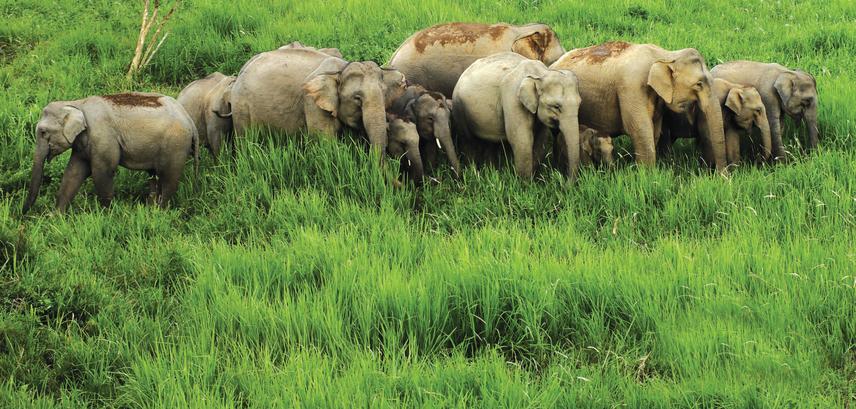Khil Bahadur Tamang
The current project aims to:
- determine the magnitude of human-elephant conflict (HEC),
- determine the characteristics of HEC,
- assess the adopted mitigated measures and spatiotemporal patterns of HEC, and,
- promoting awareness towards wild elephant conservation of fringe communities.

Human-Wildlife Conflict (HWC) is fast becoming a serious threat to the survival of many endangered species in the world. It is common to all areas where wildlife and human population coexist, sharing limited resources. In Western Nepal, the conflict between Asian Elephant (Elephas maximus) and the people residing within its habitat is the major issues, where both the lives are affected. As of DNPWC (2009), 107-145 numbers of Asian elephants are estimated in Nepal.
The Asian Elephant now is categorized as an endangered species (IUCN, 2009), struggling for their survival in the wild due to habitat loss and fragmentation. Therefore, the current project is intended to determine the magnitude of human-elephant conflict (HEC), its characteristics and assess the adopted mitigated measures as well as spatiotemporal patterns of HEC in Khata Protected Forest (KPF), Nepal.
The KPF is connected to the adjacent Katarniyaghat Wildlife Sanctuary of India by a renowned Biological corridors (BCs). Now a day, the people residing in KPF are attributed to human-elephant conflicts (HEC) and the scientific data on its causes, impacts and adopted mitigation measures are lacking which are important key features to formulate the wildlife management plan. The awareness towards conservation of the Asian elephant and the causes of HEC in this area is scanty. Therefore, awareness campaign in the fringe communities of elephant habitat is foremost promised for this project.
The information on HEC in KPF will be gathered through consultation with related stakeholders, direct observation, key informant interview, questionnaire survey and focus group discussion. The awareness campaign will be conducted by gathering of local people, publishing the scientific paper, and distributing the brochures. The result of the study will be shared with related stakeholders, to be used as baseline information in developing sound management plan and appropriate policy formulation for protection of forest areas to conserve the wild animals and minimizing the HWC using the elephant as a flagship species.